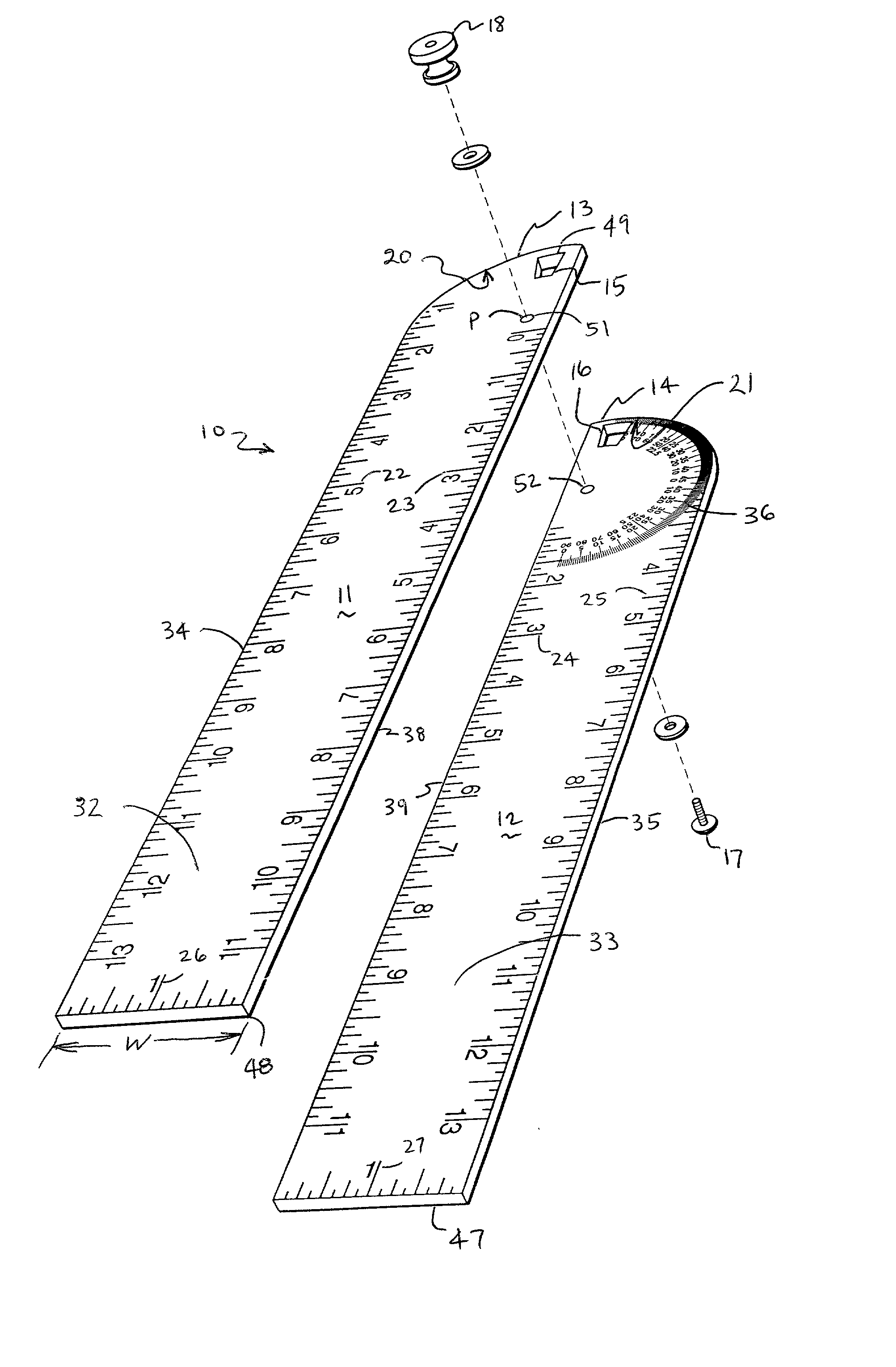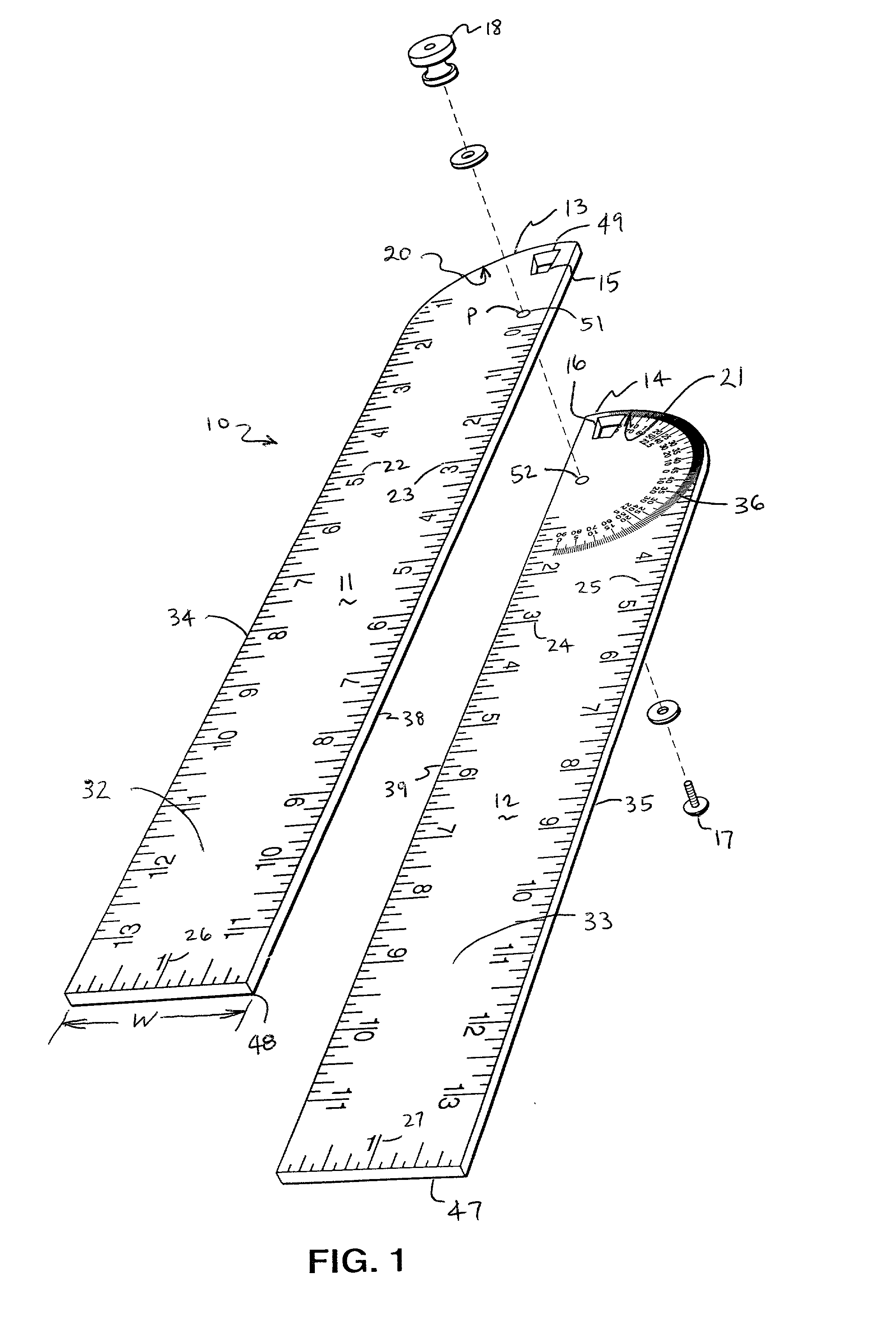Degree finding instrument
a technology of finding instruments and degrees, applied in the direction of measuring devices, instruments, printing, etc., can solve the problems of inability to achieve functions that cannot be achieved by tools, inferior to those produced with tools, and other directions, to achieve the effect of reducing uncertainty
- Summary
- Abstract
- Description
- Claims
- Application Information
AI Technical Summary
Benefits of technology
Problems solved by technology
Method used
Image
Examples
Embodiment Construction
[0048] With regards to all of the drawings herein, and with specific emphasis now to FIG. 1, there is shown the present invention an improved combination degree finding and linear measuring instrument 10 for directly indicating the degree, or angle, to be used for cutting and thereafterwards joining of the cut material items is disclosed, consisting of a pair of blade-shaped arms 11, 12 pivotally secured to each other at the ends 13, 14 by means of a pair of complementary apertures 15, 16 with a bolt 17 and nut 18 combination.
[0049] As specifically illustrated in FIG. 3, the first arm 11 and the second arm 12 are joined together in variable angular relationship. The first arm 11 and the second arm 12 are preferably joined together in pivotal relationship to each other typically by means of a bolt 17 and nut 18 combination. Of course, the bolt 17 and nut 18 combination could readily be substituted with a pin or rivet combination which is equivalent to the function of the bolt 17 and ...
PUM
 Login to View More
Login to View More Abstract
Description
Claims
Application Information
 Login to View More
Login to View More - R&D
- Intellectual Property
- Life Sciences
- Materials
- Tech Scout
- Unparalleled Data Quality
- Higher Quality Content
- 60% Fewer Hallucinations
Browse by: Latest US Patents, China's latest patents, Technical Efficacy Thesaurus, Application Domain, Technology Topic, Popular Technical Reports.
© 2025 PatSnap. All rights reserved.Legal|Privacy policy|Modern Slavery Act Transparency Statement|Sitemap|About US| Contact US: help@patsnap.com



